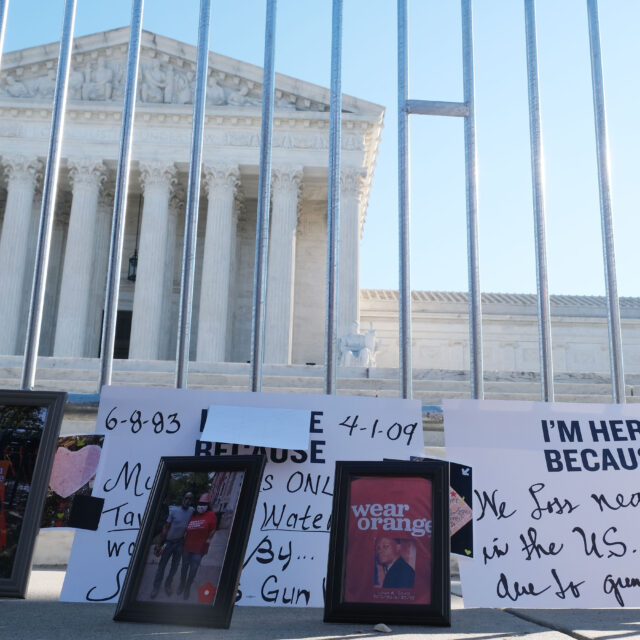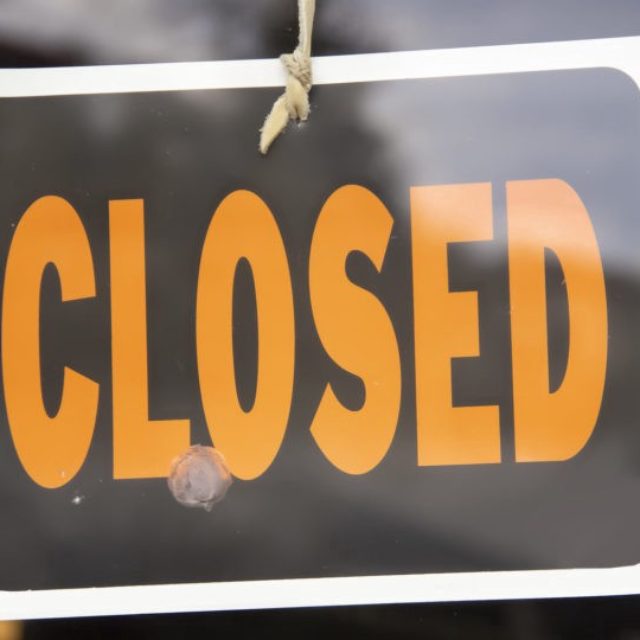What the 2020 Supreme Court Term Means for US Gun Laws

By: Eric Tirschwell, Mark Anthony Frassetto 7.20.2020
The high court’s decisions this term confirm that there is no conflict between the Constitution and reasonable, commonsense gun laws that save lives, Eric Tirschwell and Mark Frassetto argue.
The following piece ran online in The National Law Journal on July 20, 2020. Reprinted with permission.
Among the general public, this year’s Supreme Court term will be primarily remembered for its major rulings on LGBT rights, abortion and whether the president is above the law.
For observers of Second Amendment law, however, the term stood out for another reason: Twice this session, the court rejected efforts by the National Rifle Association and other opponents of gun safety laws to misinterpret the Second Amendment in a way that could undo the progress that gun violence prevention advocates have made in statehouses and at the ballot box.
First, in May, the court declined to rule on the merits in New York State Rifle & Pistol Association v. City of New York, rejecting the arguments of a state affiliate of the NRA that the case somehow presented a live Second Amendment controversy. The next month, the court declined to hear any one of the 10 petitions seeking Supreme Court review in other Second Amendment cases.
Both developments were major disappointments for extremist opponents of gun safety laws, who see the courts as one of the few remaining avenues to thwart the desires of the overwhelming majority of Americans for stronger gun laws. In the lower courts—as in statehouses and in elections—the gun lobby groups pushing this agenda have had little success. Federal courts have adopted a standard to analyze challenges to gun laws that looks at the history of the Second Amendment as well as the public safety impact of challenged gun laws. Under this standard, courts have upheld regulations on carrying firearms in public, prohibitions on assault weapons and large capacity magazines, extreme risk protection order laws allowing family members to petition courts to temporarily remove firearms from those in the midst of a crisis, and many more.
The lower courts’ verdict has been hard to miss: Across the country, federal courts continue to uphold gun safety laws in nearly all constitutional challenges.
Against this backdrop, opponents of gun safety laws saw an opportunity when the Supreme Court agreed to hear New York State Rifle & Pistol Association v. City of New York, the first major Second Amendment case taken up by the court in a decade. The case challenged a New York City rule regulating where residents who obtained permits to have handguns in their homes could go with those weapons, blocking travel to gun ranges and homes outside of New York City. After the court agreed to review the case, New York City decided the potential consequences of a bad Second Amendment decision were more important than its rule and repealed it. New York state then blocked the city from ever reenacting the rule. When the Supreme Court issued its ruling in May, a 6–3 majority agreed that the case had effectively become moot, resulting in a major setback to the NRA’s dangerous and extreme agenda to rewrite the meaning of the Second Amendment.
In the wake of the decision to reject the New York case, most observers expected the court would agree to hear at least one of the 10 petitions seeking review in Second Amendment cases that had been waiting pending a result in the New York case. These cases addressed unsuccessful lower court challenges to laws regulating the carrying of firearms in public, prohibiting assault weapons and large-capacity magazines, and requirements that newly sold guns have certain safety features. In all of these cases, the lower courts had upheld the laws. So in June, when the Supreme Court declined to review any of those decisions, it dealt another major blow to proponents of an extreme and dangerous interpretation of the Second Amendment.
To be sure, the NRA and other opponents of gun safety laws will continue in their efforts to convince the Supreme Court to gut American gun laws. They have asked the Supreme Court to throw out the current Second Amendment standard, which looks at the history of gun regulation and current considerations about public safety, and instead adopt a never-before-applied standard that would look only to how guns were regulated in the past. If this gun lobby effort is successful, a wide swath of important gun laws could be called into question.
But together, the NYSRPA ruling and the court’s denial of the other Second Amendment cases are a clear signal that the court’s majority has, so far at least, found gun lobby arguments unpersuasive. The court’s majority appears to recognize, rightly, that there is no need to interfere with the framework the lower courts are using to determine whether gun laws can withstand constitutional challenges.
The gun violence prevention movement has made major progress over the last few years, passing commonsense gun laws in red and blue states across the country. Since the mass shooting at Marjory Stoneman Douglas High School, for instance, 14 states—five of them with Republican governors—have passed extreme risk protection order laws, commonly known as red flag laws. These laws have already saved countless lives, including by preventing firearm suicides.
The recent surge in gun buying in the face of the COVID-19 pandemic, as well as current and anticipated upticks in firearm-related homicides, domestic violence and suicides, serve as a stark reminder that among the many things needed to fight the scourge of gun violence in this country is stronger gun laws—not weaker ones. These include not only extreme risk laws, but also requiring background checks on all gun sales, laws requiring secure gun storage and laws disarming domestic abusers.
As we head into this fall’s election, debates over these laws will continue on the campaign trail, and after voters weigh in, they will continue in statehouses and in Washington. As they do, opponents will surely continue to argue that the Second Amendment prevents adoption of a wide range of commonsense gun legislation. The Supreme Court’s 2019–20 term, however, offers the latest confirmation that they are wrong, and that there is no conflict between the Constitution and reasonable, commonsense gun laws that save lives.
Authors
-
Eric Tirschwell
Eric brings over 25 years of litigation and trial experience to his work overseeing Everytown Law’s docket, which includes a wide range of gun safety and Second Amendment litigation around the country.
-
Mark Anthony Frassetto
Mark is a scholar of Second Amendment history and law and the Anglo-American History of gun regulation.





